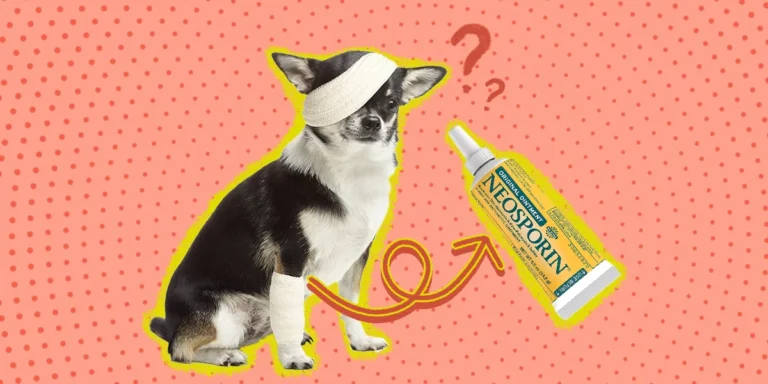Introduction
Dogs are prone to cuts, scrapes, and minor wounds, and as a pet owner, it’s natural to want to provide quick relief and prevent infection. Neosporin, a popular over-the-counter antibiotic ointment for humans, often comes to mind. Many dog owners ask: can you put Neosporin on a dog? While Neosporin can be helpful in some cases, there are important precautions and guidelines to follow to ensure your dog’s safety and proper healing.
What Is Neosporin?
Neosporin is a topical antibiotic ointment containing a combination of three antibiotics: bacitracin, neomycin, and polymyxin B. It is designed to prevent infection in minor cuts, scrapes, and burns in humans. The ointment works by stopping bacterial growth at the site of the wound.
Is Neosporin Safe for Dogs?
In general, Neosporin is safe for dogs in small amounts when applied to minor wounds. However, there are some important considerations:
Dogs May Lick the Ointment
Dogs often lick their wounds, and ingesting Neosporin in small amounts is usually not harmful. However, repeated or large ingestion can cause stomach upset or diarrhea. Some dogs may be sensitive to the ingredients, so it’s important to monitor them after application.Neomycin Sensitivity
One of the ingredients, neomycin, can occasionally cause allergic reactions or skin irritation in some dogs. If you notice redness, swelling, or itching after applying Neosporin, stop use immediately and consult a veterinarian.Only for Minor Wounds
Neosporin should not be used on deep wounds, puncture wounds, or serious infections. These injuries require professional veterinary care. Neosporin is intended for superficial cuts, scrapes, and minor abrasions.
How to Apply Neosporin to a Dog
Clean the Wound First
Gently rinse the affected area with clean water to remove dirt and debris. Use mild soap if necessary, but avoid harsh chemicals.Dry the Area
Pat the wound dry with a clean cloth or gauze to prevent moisture buildup, which can slow healing.Apply a Thin Layer
Use a small amount of Neosporin and spread a thin layer over the wound. Excess ointment is not necessary and may increase the chance of your dog licking it off.Prevent Licking
If your dog tends to lick the ointment, use an Elizabethan collar (cone) or a protective bandage to keep the area clean and allow proper healing.Monitor the Wound
Check the wound daily for signs of healing or infection. If it worsens, becomes red, swollen, or oozes pus, seek veterinary care immediately.
When to Avoid Neosporin on Dogs
On large, deep, or infected wounds – these need professional treatment.
On areas your dog can easily ingest in large amounts, like inside the mouth or paw pads.
If your dog has a known allergy to neomycin, bacitracin, or polymyxin B.
If the wound is accompanied by severe bleeding, fever, or systemic illness.
Alternatives to Neosporin for Dogs
If you’re hesitant to use Neosporin, there are safer alternatives:
Veterinary-Specific Antibiotic Ointments
Veterinarians can recommend ointments formulated specifically for dogs, reducing the risk of irritation or ingestion issues.Natural Healing Options
Products like aloe vera gel, honey-based ointments, or chamomile sprays can promote wound healing and are generally safe for dogs.Proper Cleaning and Bandaging
Sometimes, cleaning the wound and covering it with a sterile bandage is enough to prevent infection without any ointment.
Tips for Faster Healing
Keep your dog from scratching or biting the wound.
Ensure your dog is up-to-date on vaccinations, especially tetanus if needed.
Maintain a clean environment to prevent dirt and bacteria from entering the wound.
Provide proper nutrition to support healing.
Conclusion
You can use Neosporin on a dog for minor cuts and scrapes, but it must be applied carefully and in small amounts. Always clean the wound first, apply a thin layer, and prevent your dog from licking it excessively. Avoid using Neosporin on serious injuries or if your dog has a known allergy to the ingredients. Monitoring the wound closely and consulting a veterinarian when necessary ensures your dog heals safely and effectively. By following these guidelines, you can safely manage minor injuries at home and keep your furry friend healthy and comfortable.


